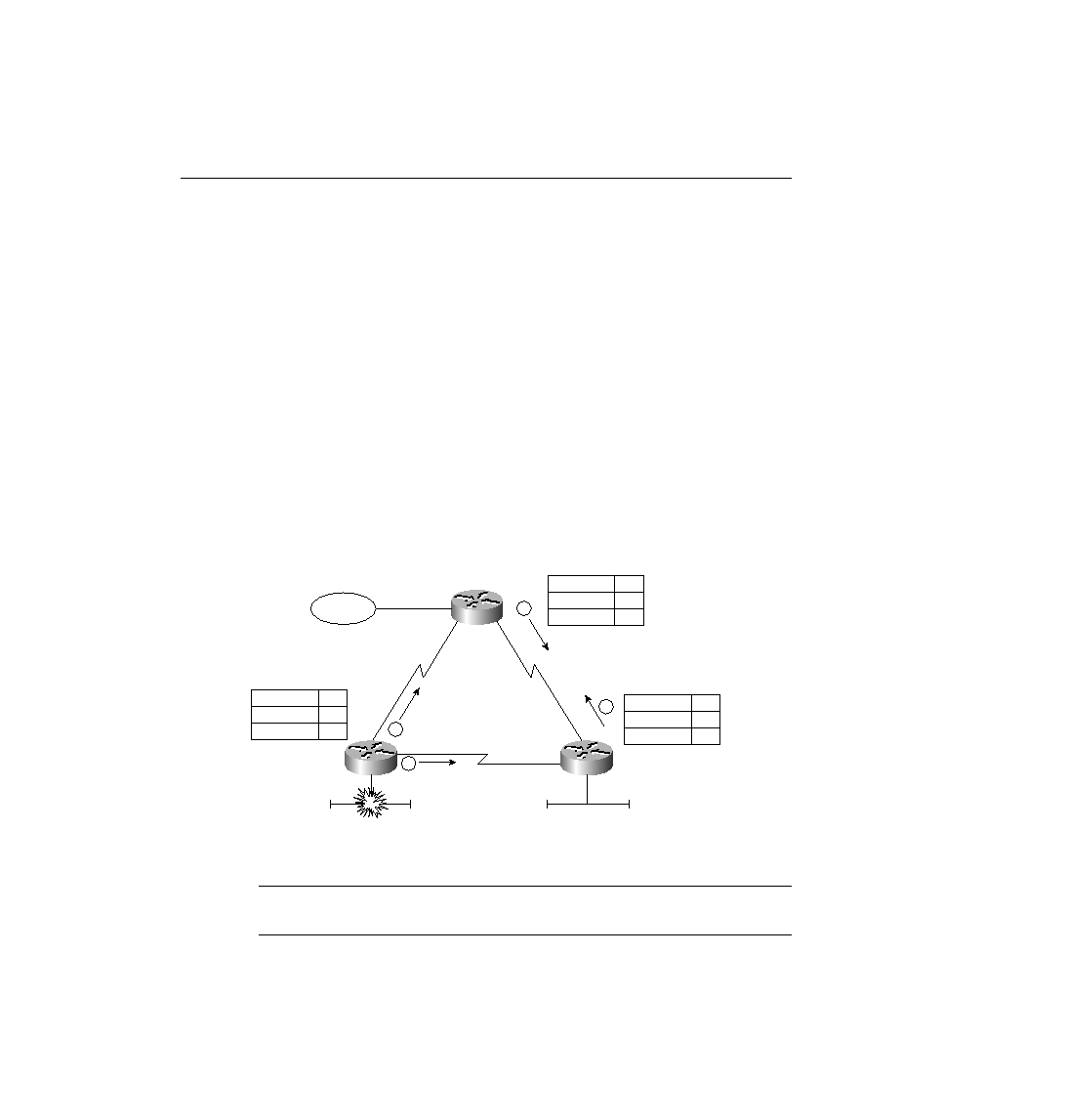
is different than poison reverse--unfortunately, some well-known TCP/IP references have used
these terms in different ways, making things quite a mess. (The typical description in the Cisco
context follows.) When a distance vector routing protocol notices that a particular route is no
longer valid, it has two choices. One is simply to quit advertising about that subnet; the other is
to advertise that route, but with an infinite metric, signifying that the route is bad. Route
poisoning calls for the second of these options, which removes any ambiguity about whether
the route is still valid. For example, in Figure 6-7 again, a metric of 16 is used to signify infinity.
Router C is using route poisoning to ensure that Router A and Router B do not point routes for
162.11.10.0 back through Router C. (The examples in this chapter all used route poisoning--
in other words, the bad routes were advertised with an infinite metric.)
known as triggered updates. When a router notices that a directly connected subnet has changed
state, it immediately sends another routing update on its other interfaces rather than waiting on
the routing update timer to expire. This causes the information about the route whose status has
changed to be forwarded more quickly and starts the holddown timers more quickly as well on
the neighboring routers, as seen in Figure 6-8.
important to the description, so these other routes in the update are not listed.